How to Use Paintings to Create Stunning Focal Points in Your Home
-
July 24, 2024
Informational
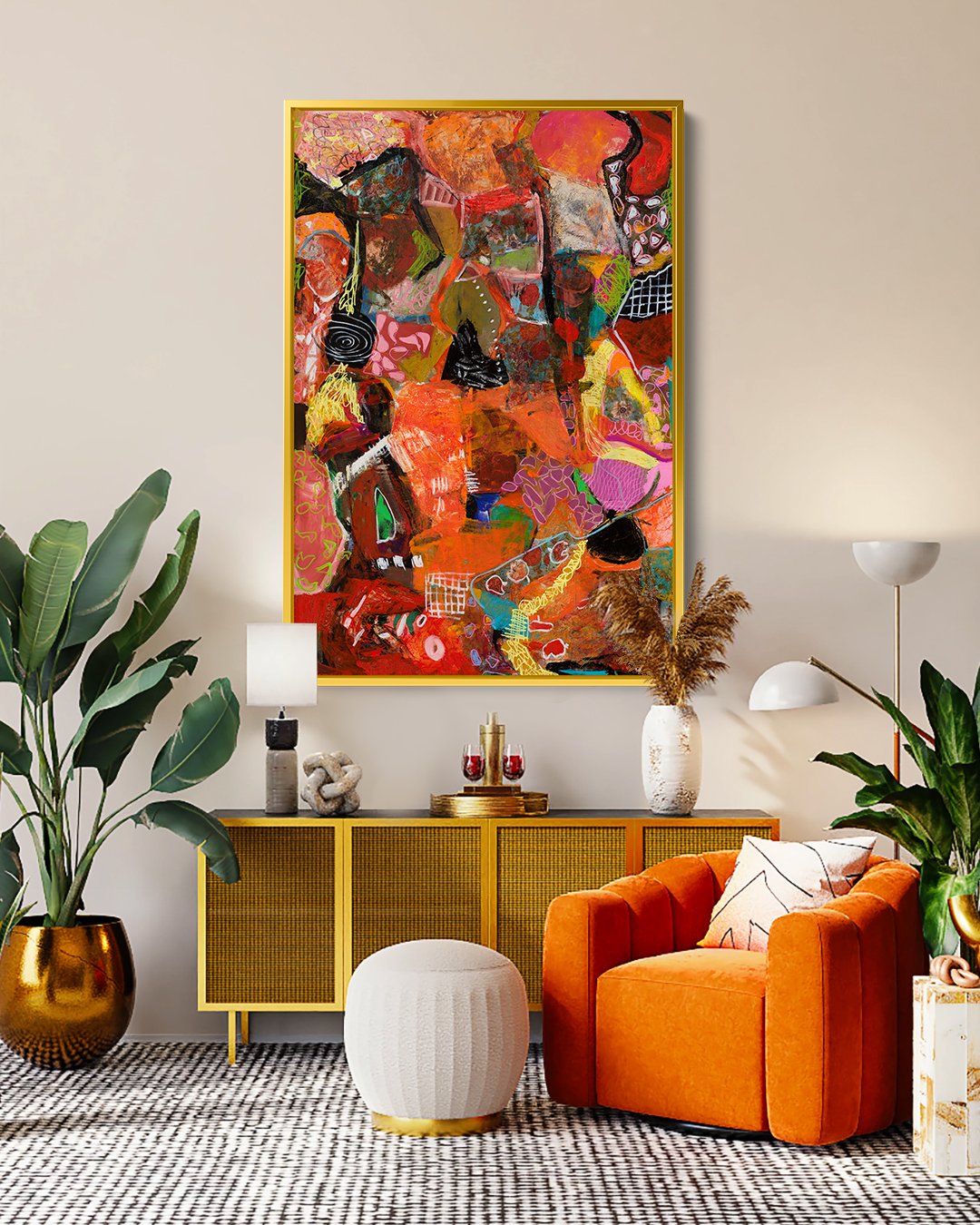
Written by: Jessica Lin-Tupas
The Importance of Focal Points in Interior Design
When designing your home, whether you’re moving into a new home or redecorating, it is critical that you design with focal points in mind. A focal point in interior design is often described as an area of interest within a space that grabs and holds the viewer’s interest. Focal points can create harmony, add depth, and provide guidance in designing a room. To select the appropriate focal point, it is important to consider the purpose, theme, size, and colour scheme of the room. In this article, we will be exploring how to select a painting that will act as a focal point.
You may find that rooms that were designed without a focal point may feel disorienting. This does not provide a homely feel. Designing with focal points will help curate a home that is exciting, beautiful, cohesive, reflective of yourself, and ultimately feel like home. At the end of the process, you should find yourself in a room that looks beautiful and feels like you.
Choosing the Right Painting
Paintings can act as a unique focal point that defines the character of a room. Paintings are versatile and visually stimulating options to effortlessly set the intended mood and theme of the room. By exploring artworks of varying sizes, colours, and styles, you can draw attention and build cohesion in the room.
Subject
It is important to select a painting which compliments the intended mood of your room. If you intend to design a room which reflects yourself, it is beneficial to select an artwork that holds personal significance or conforms to your ideology. By selecting an artwork which aligns with your ideology, the room’s theme can be more clearly defined.
For example, the theme of the paintings below are peace and hope. If these values are significant to you and align with the room’s theme, they may be suitable for you. By selecting artworks like these may deliver your ideology and create a soothing mood to the room.
By Audrey Lee (Source: meetarts.org)
Colour
To create a harmonious room, the colour of an artwork or collection of artworks should complement the other decor and mood of the room. When selecting the colours of an artwork, you should consider the intended mood of the room as the colours will deeply influence it. When selecting the appropriate colour(s), consider what the appropriate colour scheme, temperatures, and combinations are. If you prefer your room to be calm, then use lighter colours. If the room is to be energising, then darker colours will be suitable. Using blue can create a tranquil or productive atmosphere.
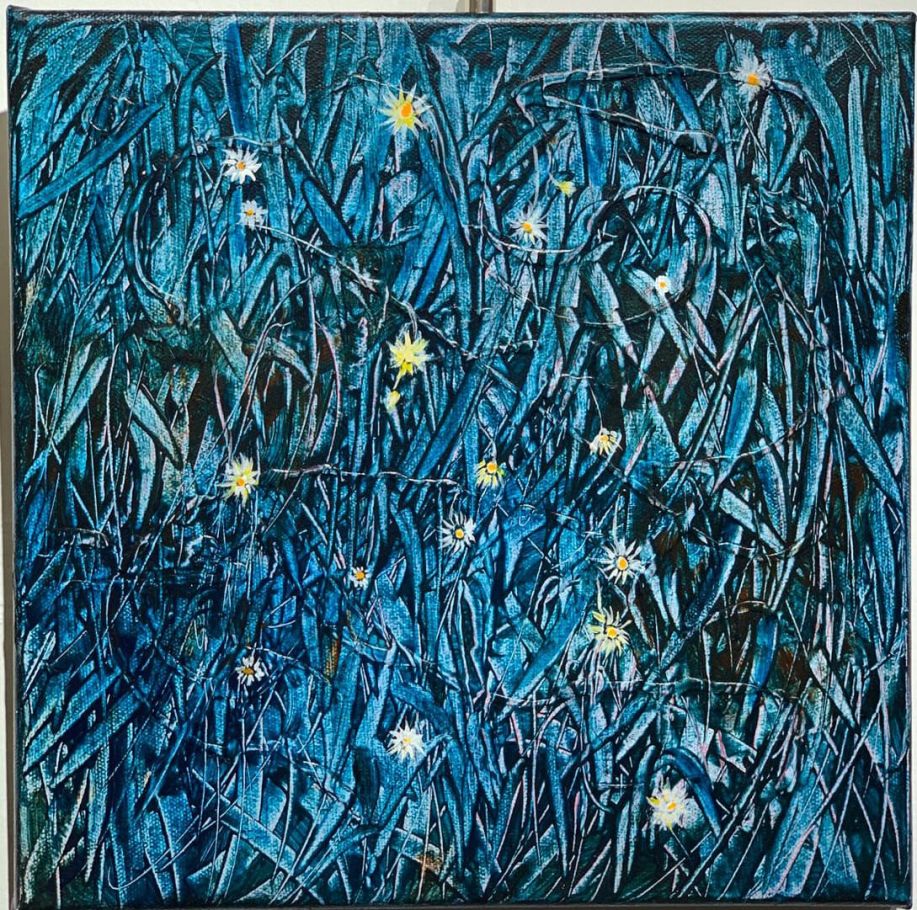
By Queenie Kou (Source: meetarts.org)
Yellows can create an energetic or warm mood.

By Zhang Kaini (Source: meetarts.org)
If you are selecting a collection of artworks, select paintings which complement and accentuate one another. Try referring to the colour wheel and colour schemes to pick appropriately.
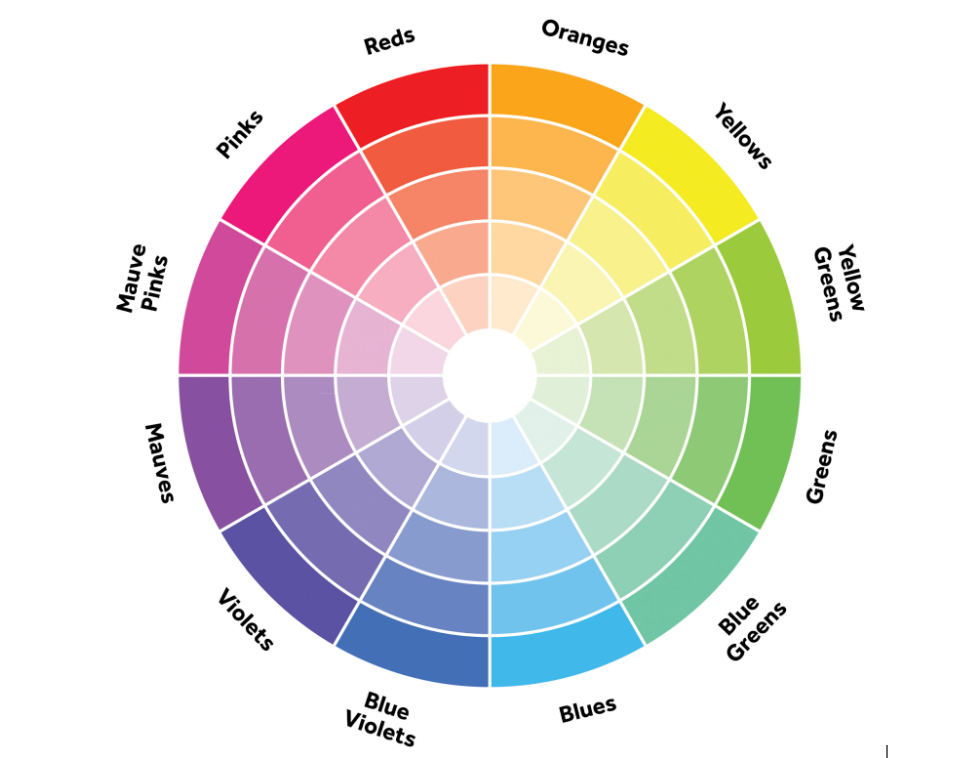
(Source: Sophie Robinson)
A simple option to create a cohesive room and clearly deliver the room’s mood is a monochromatic colour scheme. A monochromatic colour scheme is made up of various tones of the same hue. However, if you are interested in including more colours, consider a triadic colour scheme.
 (Source: BMP Online)
(Source: BMP Online)
A triadic colour scheme is made of hues that are equally spaced out on the colour wheel. Failing to consider colour schemes may produce an underwhelming or overwhelming room.
(Source: Sitepoint)
Size and Arrangement
To create a harmonious room, it is crucial to choose a painting that best suits the room size and mood. The size of the painting will influence the dynamics of the room. This condition is particularly tricky as it influences the flow rather than the mood of the room. The size of the room and any architectural elements, a fireplace for example, should guide decisions on what sized artwork best fits the room. Generally, the size of the painting does not matter if it is selected and arranged appropriately. If a room is particularly small, consider smaller or less overwhelming paintings. Large paintings may work in smaller rooms, however it takes additional planning and care to ensure that it does not overwhelm the room.
If a room is especially large, consider a large and bold painting to instantly draw attention and set the tone of the room. The image below is of a Ocean-themed painting by Babita Sridhar’s, which accentuates the fireplace and livens up the room.
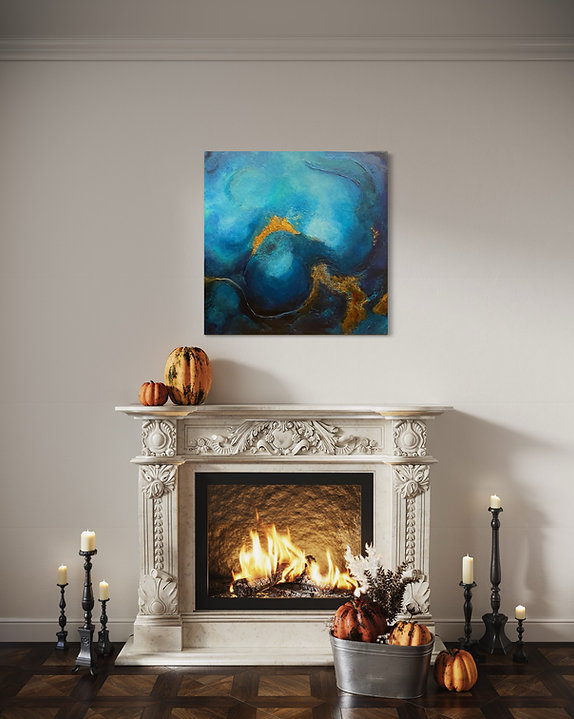
By Babita Sridhar (Source: meetarts.org)
An alternative may be curating a collection of smaller paintings to create a larger and lasting impact. This can be challenging as it complicates the process of creating cohesion in the room, but may be extremely gratifying. While aligning them in order creates a neat and clean feel, haphazard arrangement has its beauty in providing a carefree atmosphere. However, this is not to say that one should try to fit as many paintings as possible onto a wall as overcrowding the focal area will lead to a cluttered and overwhelming visual.
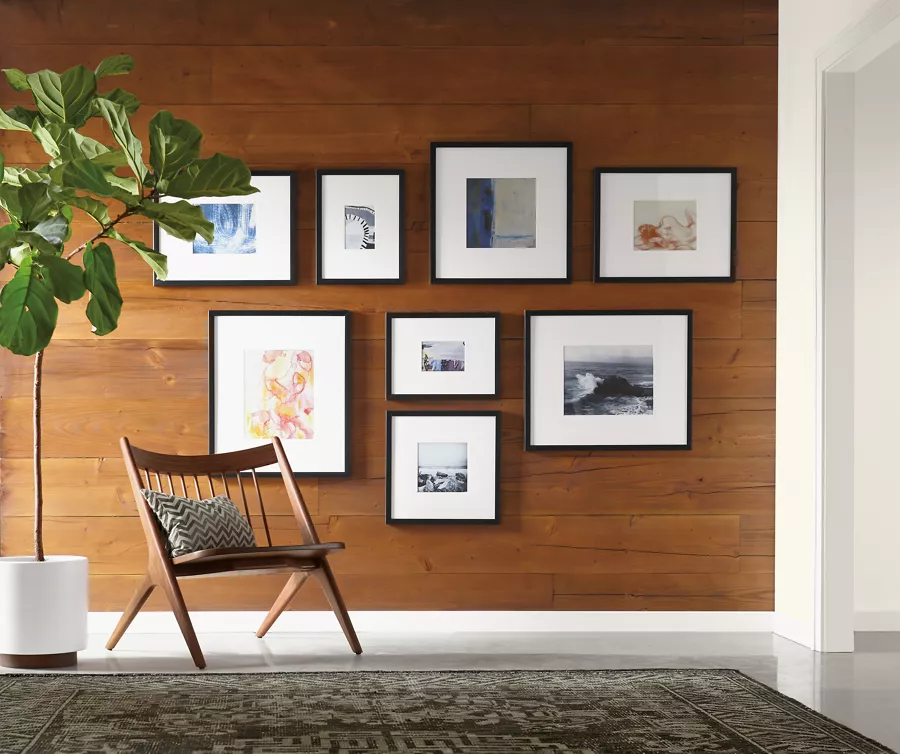
(Source: Room & Board)
Framing and Mounting
A suitable frame would complement the artwork and the room’s mood. The thickness, colour, material, and style of a frame can add texture and develop the theme of the room. Various frame styles further personalise and set the theme of the artwork. Some styles include traditional, decorative, modern, rustic and minimalistic. If you’re designing a modern room, consider no frame or a standard frame. A standard frame, is typically described as a simple frame in a neutral solid colour. If you are designing a neo-classical or classical themed room, a decorative or traditional frame may best call attention to the artwork.
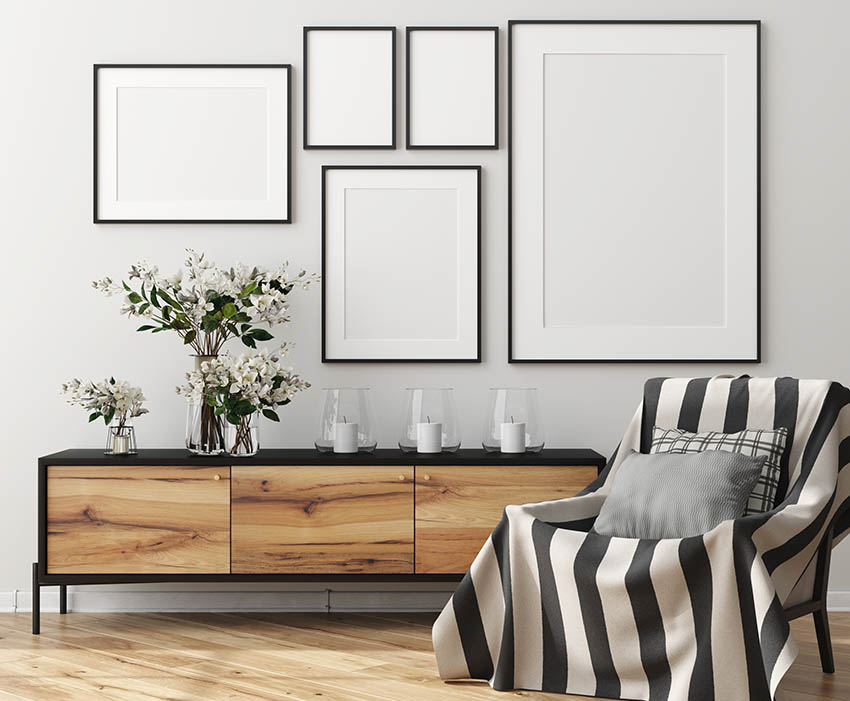
Gallery Frame. (Source: Designing Idea)

Decorative Frame. (Source: ArtStation)
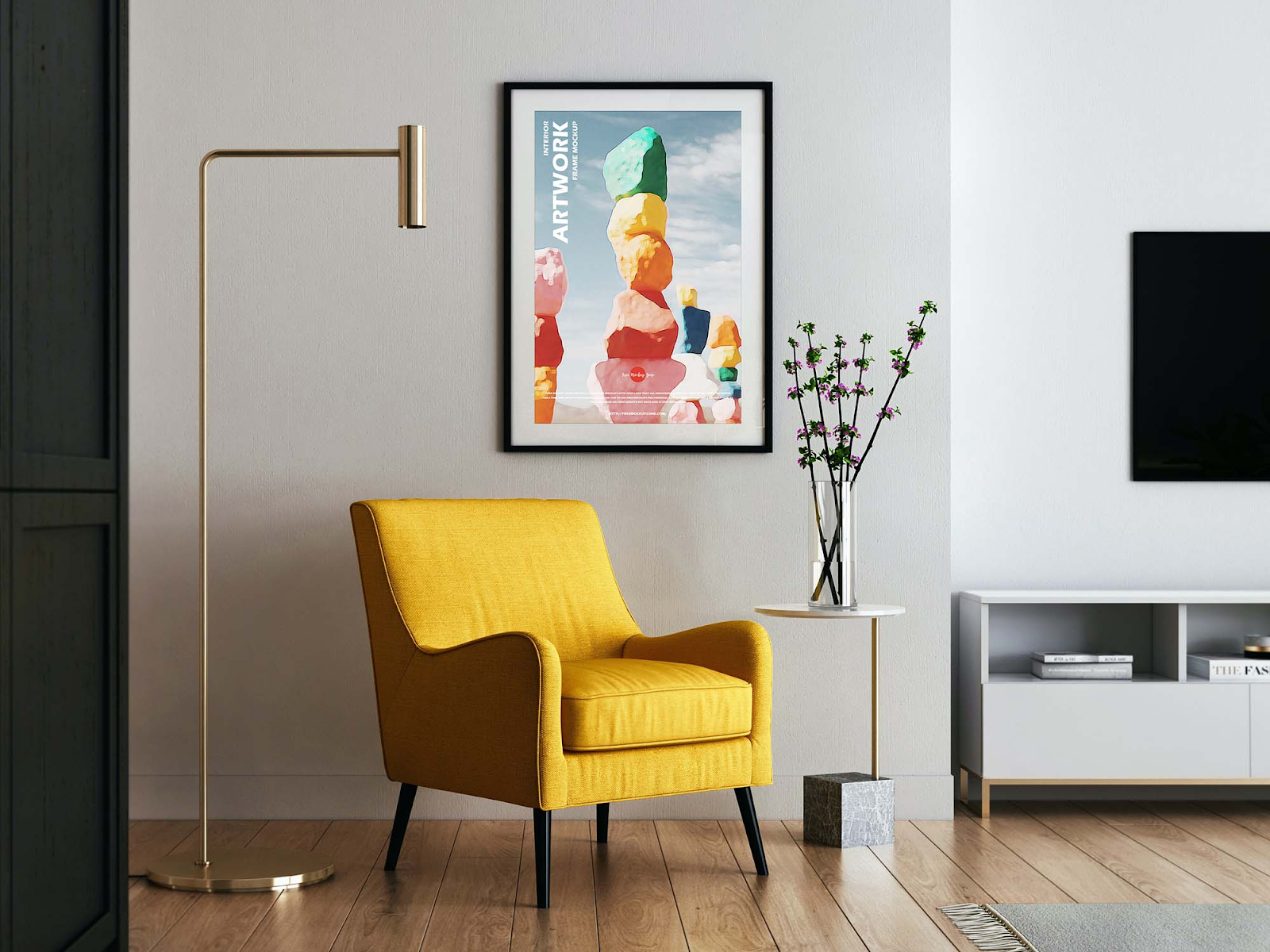
Minimalist Frame. (Source: Unblast)
When mounting the painting ensure that the painting is safely mounted. There are several types of mounts including hooks, brackets, and rails. You should consider what type of mount is most fitting.
Placement Strategies
Once you have selected a painting that best fits the purpose of your room, you must select what part of the room you want to draw attention to and use it as a marker to guide other elements in the room. When identifying this place, you must consider what part of the room you would like to highlight and what kind of atmosphere you want the room to emulate.
This especially comes into play when considering height and positioning of the painting on the wall. The placement depends on where it will be most visible and prominent. It should be at eye-level, ideally, but there are exceptions to this. Norman Selamat’s artwork is on the ceiling of a bathroom which can be enjoyed while taking a bath.
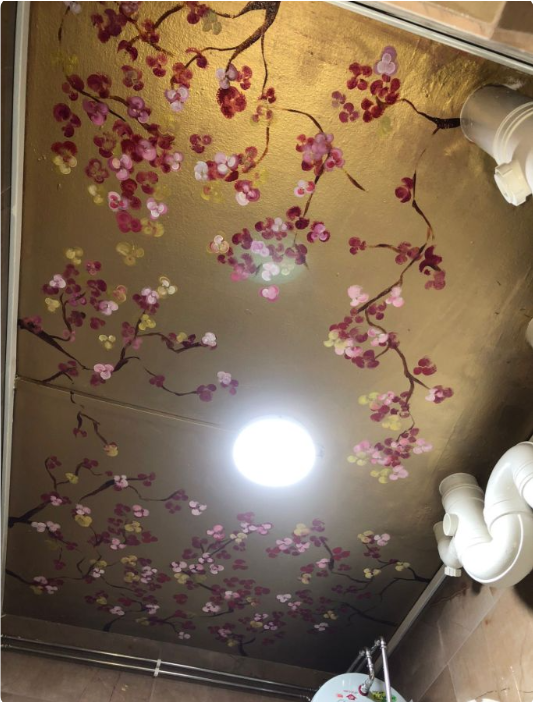
By Norman Selamat (Source: meetarts.org)
Enhancing the Focal Point
Try experimenting with different lighting, colours, and textures when selecting and arranging other elements in the room to complement the existing architecture and focal point. Through these elements, you can personalise and enhance the perception of space. When chosen well, the process will liven and bring vibrancy to your home.
Along with this, lighting is critical to accentuating the painting’s role in furthering the purpose of the room. Lighting is a nuanced element. You can use different types of lighting and try various positions to emphasise the painting. Using ambient, accent, and task lighting can set varying tones. These lights can be placed above, below, and/or sides of the artwork. Evaluate whether one or more of these lighting types and placements will enhance the painting’s role as the focal point of the room.

(Source: Interiors Revitalized)
Conclusion
Overall, there are many points to consider when designing your home. It is critical to be flexible and open to experimenting. select unique elements to personalise the space and be mindful that it will change over time.
MeetArts at meetarts.org offers a diverse collection of affordable artworks. Find the perfect painting to personalise your home.
References
- https://thedesigneur.com/focal-point-in-interior-design/
- https://www.homenish.com/focal-point-interior-design/
- https://www.thespruce.com/living-room-artwork-2213465
- https://www.melaniejadedesign.com/interior-design-focal-points/
- https://www.eden-gallery.com/news/how-to-use-art-as-a-focal-point-in-a-room
- https://housebouse.com/what-is-a-focal-point-in-interior-design/
- https://www.apartmenttherapy.com/art-hanging-mistakes-to-avoid-246124
- https://www.bhg.com/decorating/home-accessories/wall-art/gallery-wall/
- https://interiorsrevitalized.com/focal-point/
- https://www.davidland.com/at-home
- https://www.meetarts.org/commission-ceiling-abstract-contemporary.html
- https://www.pinterest.com/pin/125467539607007283/
- https://unblast.com/free-modern-interior-artwork-frame-mockup-psd/
- https://www.smashingmagazine.com/2015/02/design-principles-dominance-focal-points-hierarchy/
- https://www.touchofmodern.com/sales/tempered-art-glass/tidal-abstract-2-frameless-free-floating-tempered-glass-panel-graphic-wall-art?wall=1
- https://www.unleashedgallery.com/art-blog/abstract-art-in-interior-design/
- https://houseofgossamer.com/interior-design/elements-of-design/
- https://foyr.com/learn/color-theory-in-interior-design
- https://designertrapped.com/gallery-wall-ideas/
- www.artstation.com
- www.sitepoint.com
- www.sophierobinson.co.uk
- www.bmp-online.blogspot.com


 PREVIOUS ARTICLE
PREVIOUS ARTICLE 








